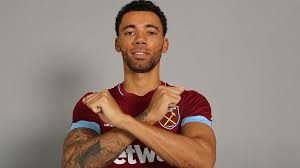 Football scouting is an evolving industry using more and more technology. The days of relying on an old-school scout gut feeling are long gone.
Football scouting is an evolving industry using more and more technology. The days of relying on an old-school scout gut feeling are long gone.
Most clubs now use computer programmes, such as Scout7, to gather detailed statistical analyses of players. Videos are uploaded within minutes of a game finishing, enabling a manager or director of football to run the rule over a player from the comfort of his office.
So once a player has been identified, the next step is the transfer (or loan) offer. Pretty straightforward, you’d think, but there is more than one way to start a transfer. The most obvious is for a buying club to submit a formal written offer for a player, seemingly by fax even in this day and age, which will then be considered by the selling club.
 But it is more common for clubs to contact trusted agents to act on their behalf, either in finding an available player from another club, or finding a buyer for their own unwanted player. These agents act as intermediaries between the buyers and the sellers making inquiries and feeling out clubs and players.
But it is more common for clubs to contact trusted agents to act on their behalf, either in finding an available player from another club, or finding a buyer for their own unwanted player. These agents act as intermediaries between the buyers and the sellers making inquiries and feeling out clubs and players.
Premier League rules state that “a player under contract shall not directly or indirectly make any approach to another club without having obtained the prior written consent of the existing club to who he is contracted.”
Reality, of course, is different. Rarely will a bid be submitted for a player, without the buying club having contacted the player’s representatives to see if he would be interested in a move, and if so what kind of wages he would be after.
 Players mostly leave the negotiations to their agents, and are kept abreast of the situation from afar. They usually meet with a manager before a deal goes through to discuss how he would fit in at his potential new club.
Players mostly leave the negotiations to their agents, and are kept abreast of the situation from afar. They usually meet with a manager before a deal goes through to discuss how he would fit in at his potential new club.
The final hurdles in a deal are the medical and, for some players, the work permit. Medicals at Premier League clubs are stringent, carried out at the training ground or a private hospital. Work-permits, meanwhile, are needed for any player over the age of 16 who does not own an EU passport.
The buying club, basically, agrees to sponsor the player to be in the UK. A certificate of sponsorship is  then produced by the club, which is submitted to the FA. The FA will grant the work permit if the player has played 75% of competitive games for a FIFA-ranked top 70 nation over the past two years.
then produced by the club, which is submitted to the FA. The FA will grant the work permit if the player has played 75% of competitive games for a FIFA-ranked top 70 nation over the past two years.
Once the fee is agreed, the personal terms are agreed, the medical is done and a work permit obtained where necessary. All that remains is to lodge the signed and sealed, finalised paperwork with the Premier League and the FA…
The final task is made sure to make sure the media department get the obligatory smiling photo of the player with his new club’s shirt, a video and the first interview with quotes saying how pleased he is to be here for the official website.
